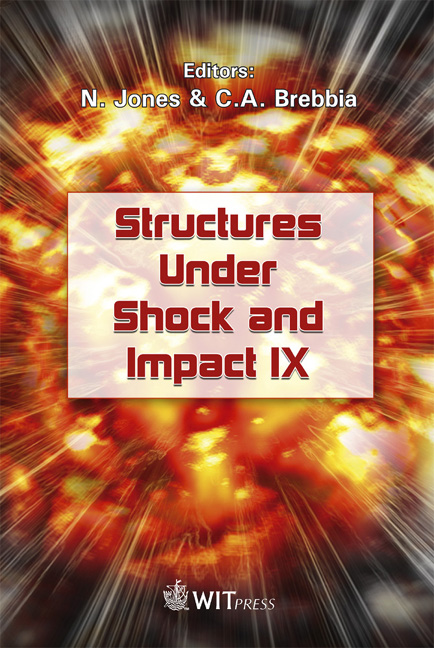Robust Prediction Of Residual Velocities And Ballistic Limits Of Projectiles For Impact On Thin Aluminium Plates
Price
Free (open access)
Transaction
Volume
87
Pages
10
Published
2006
Size
748 kb
Paper DOI
10.2495/SU060211
Copyright
WIT Press
Author(s)
M. Raguraman & A. Deb
Abstract
This paper deals with the simulation-driven study of the impact of hardened steel projectiles on thin aluminium target plates using explicit finite element analysis as implemented in LS-DYNA. The evaluation of finite element modelling includes a comprehensive mesh convergence study using shell elements for representing target plates and the solid element-based representation of ogivalnosed projectiles. A user-friendly automatic contact detection algorithm is used for capturing interaction between the projectile and the target plate. It is shown that the proper choice of mesh density and strain rate-dependent material properties is crucial as these parameters significantly affect the computed residual velocity. The efficacy of correlation with experimental data is adjudged in terms of a ‘correlation index’ defined in the present study for which values close to unity are desirable. By simulating laboratory impact tests on thin aluminium plates carried out by earlier investigators, extremely good prediction of experimental ballistic limits has been observed with correlation indices approaching unity. Additional simulation-based parametric studies have been carried out and results consistent with test data have been obtained. The simulation procedures followed in the present study can be applied with confidence in designing thin aluminium armour plates for protection against low calibre projectiles. Keywords: residual velocity, ballistic limit, projectile, aluminium plate, finite element modelling, LS-DYNA.
Keywords
residual velocity, ballistic limit, projectile, aluminium plate, finite element modelling, LS-DYNA.





